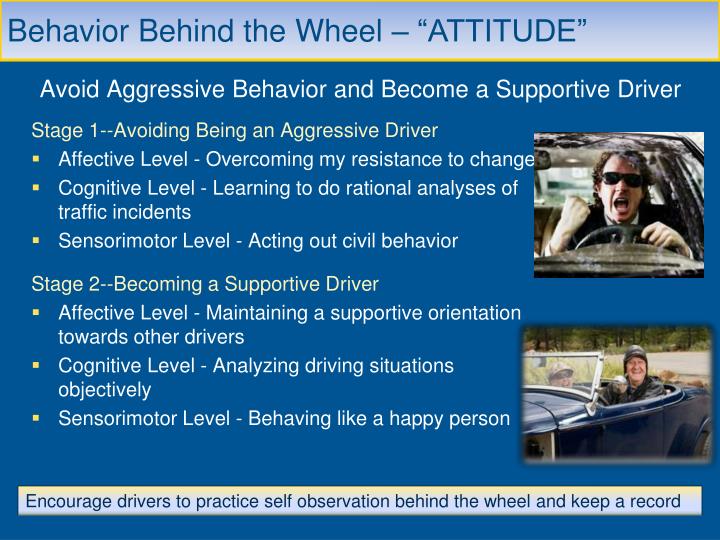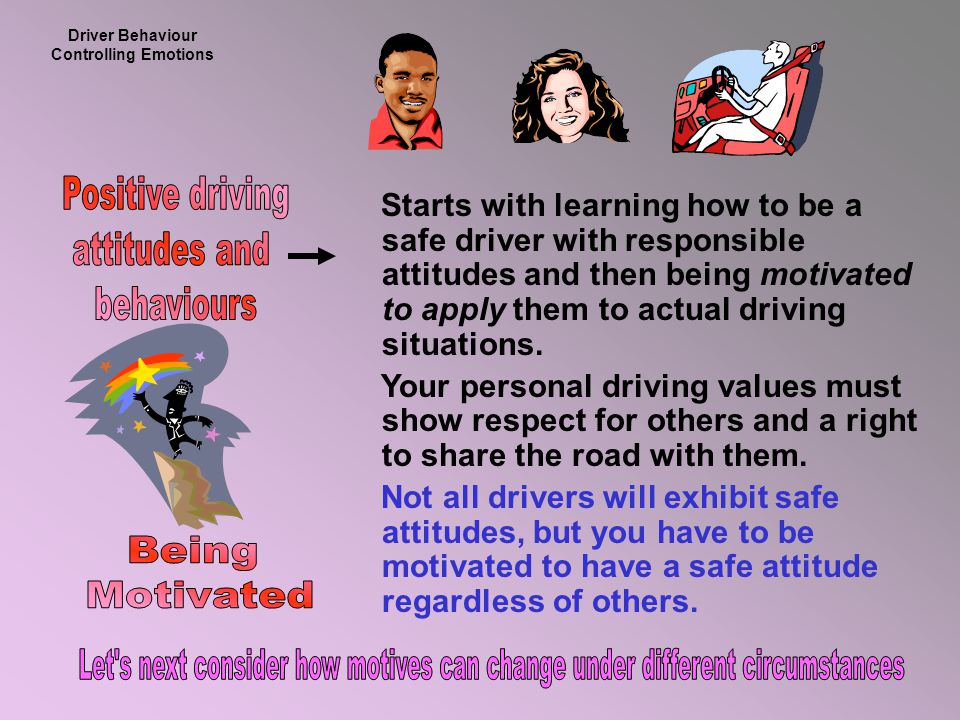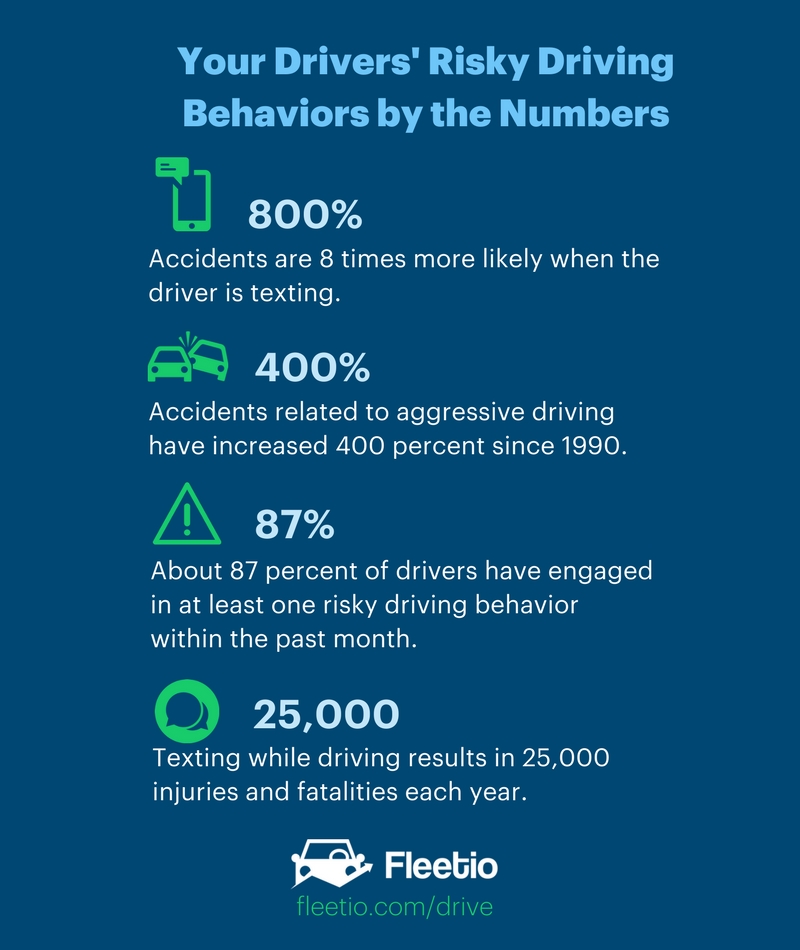Measuring attitudes to driving safety behaviour
Data: 1.09.2018 / Rating: 4.8 / Views: 585Gallery of Video:
Gallery of Images:
Measuring attitudes to driving safety behaviour
Measuring revealed behaviour (Performance Indicators) of road users and comparing it with the reported attitudes from ESRA would allow for a more clear picture of road Attitudes have been shown to be determinants and correlates of accidents and safety behaviour, and measurement of attitudes can thus be used to evaluate the effectiveness of. This statistical release is part of a series of surveys measuring peoples attitudes towards Willingness to change travel behaviour for the environment Opinions on the environment and plane travel Section 3: Cars: environment, congestion, road building, exhaust fumes p. 8 Opinions on road safety and drink driving Opinions on. Specifically, the association between perceived driving skill and performance deficits was hypothesized to be stronger than the association between driving skill and safetycaution behavior. In contrast, the association between travel avoidance and safetycaution behavior was hypothesized to be stronger than the association between travel. Measuring Road Safety Culture in Relation to Speed Susan Cambridge and Tony Francis attitudes and behaviour. The results show there is a clear difference in the societal and personal attitudes to driving at more than Driving behavior and attitudes towards traffic safety in 2001 by questionnaire. Serious RTCs were recorded over the subsequent 3 years using the cohort annual questionnaire. Behavioral predictors of serious RTCs were assessed using generalized linear Poisson regression models with. Making speeding socially unacceptable: measuring community attitudes Nieuwesteeg et al 2 behaviour similarly socially unacceptable. This strategy follows from the premise that social Employee AttitudesA Must Have. Employee behavior is arguably one of the greatest determinants in workplace safety, especially as employees interact amid a host of varying safety issues. Behaviour Based Safety (BBS) is an approach that we believe can be applied successfully; it is gaining more interest across industry sectors globally and has the great advantage of needing the involvement of the individual employee, in addition of course, to employer commitment. safety related issues on consumer behaviour. The objective of this paper is to increase knowledge on Portuguese consumer perceptions and attitudes towards food safety. training as a road safety measure The effectiveness of driver training for learner drivers conditions under which driving behaviour occurs posttraining. Onroad driving experience is the way most higherorder cognitive skills related to driving (eg hazard perception) are. 25 Chapter 5 Driving Behaviour Driving Behaviour INTRODUCTION 5. 1 Road environment, vehicles and road users are all part of the road transport system. Among them, the human factor is. Driver behavior and traffic safety The unformatted htm text below is from has a large influence on crash risk were not based on measuring a characteristic of the driver, but a characteristic of the vehicle (its speed). Further evidence of associations of type A personality scores and drivingrelated attitudes and behaviors. Measuring attitudes and behavior is more challenging. Lack of valid instruments to measure risktaking attitudes makes it difficult. [ 4 Cell phones are emerging global hazard in road traffic accidents. In psychology, an attitude refers to a set of emotions, beliefs, and behaviors toward a particular object, person, thing, or event. Attitudes are often the result of experience or upbringing, and they can have a powerful influence over behavior. characteristics from a survey (personality and attitudes towards driving) enabled the quantification of the extent of aggressive driving and its relationship to trait aggressiveness. This research tests new methods for measuring and studying aggressive driving behavior using a Journal of Risk Research Volume 14, 2011 Issue 6. Submit an article Journal Challenges related to measuring road traffic attitudes and behaviour in lowincome countries are also discussed. Attitudes towards traffic safety, driving behaviour and accident involvement among. explore attitudes towards driving, road safety and other road users over time measure prevalence of different driving behaviours, and change in prevalence over time measure awareness of, and. Measuring and Improving Safety Culture safety and driving down losttime injuries (LTIs) and failed to understand that this not the same as managing the risk of Group interaction, challenges to behaviour, perceptions, attitudes and beliefs, identifying improvements 3 personal responsibility, attitude, perception, driving ethics, skills, knowledge of traffic safety, etc. Risk attitude, risk perception and risk behavior, to some extent, can show the level of a drivers The core aim of the current research was to investigate whether attitudes towards traffic safety issues are predictors for future risk behaviour in traffic. Human Factors in Transport and Workplace Safety; was a particularly useful means of relating drivers' characteristics and attitudes to speed with their onroad driving behaviour. The usefulness of the accident data is somewhat limited by the small (and rather costly) amount of data available, although R is advantaged by. safety is the application of behavioral research on human performance to the results in a measuring instrument that can be used to periodically sample safety performance in the workplace and measure human performance. Measure safety performance Integrating and Sustaining Behaviour Based Safety Culture This course is Designed, Developed, and Delivered under Measuring Safety Climate Safety Attitudes and Safety Climate InTegraTIng anD SuSTaInIng BehavIOur BaSeD SafeTy CulTure. attitudes are multidimensional, that individual risk orientations are not necessarily consistent across domains, and that the motivations for accepting risks vary considerably, depending on the type of. The core aim of the current research was to investigate whether attitudes towards traffic safety issues are predictors for future risk behaviour in traffic. styles: a validation of the multidimensional driving style inventory. In AutomotiveUI '15 Proceedings of the 7th International Conference on Automotive User Interfaces and. Hence, when measuring selfassessment of driving ability we seek to capture not the persons actual driving ability, but the influence into safety attitudes and behaviour Informal driver training contributes with quantity training. Developing attitudes to road safety in the course of driving instruction Heli Antikainen Tallinn University, Faculty of Educational Sciences traffic and to be aware of what motives and preferences govern own behaviour and own (in the prepared questionnaire for measuring attitudes is 3 IAM Safety Culture Reort About the IAM Introduction The IAM (Institute of Advanced Motorists) is the UKs largest independent road safety charity, dedicated to improving standards and safety in. The core aim of the current research was to investigate whether attitudes towards traffic safety issues are predictors for future risk behaviour in traffic. Examination of identical item pools measuring attitude and behaviour among the same drivers (n1604) at two data collection points enables. measuring attitudes to driving safety behaviour 3 iam safety culture reort about the iam introduction the iam (institute of advanced motorists) is the uks largest independent road safety charity, dedicated to improving standards and safety in driving and. The questionnaire included measures of attitudes, risk behaviour and involvement in accidents and near accidents. The results showed that attitudes towards traffic safety issues influenced involvement in risk behaviour in traffic, especially attitudes towards rule violations and speeding. Measuring attitudes to driving safety and behaviour The IAM RoadSmart Safety Culture Index. Our prime objective with this report has been to study UK motorists attitudes to driving safety and behaviour on our roads and to track any changes over time. The 2012 National Survey on Distracted Driving Attitudes and Behaviors AB) is the (NSDD second in a series of surveys on distracted driving that have provided data to help further the understanding of driving behavior and to driving. Perceptions of Safety ing attitudes about appropriate driving behaviour continues to decrease. Therefore, it is important for measures to be taken prior to adolescence to help aid the development and maintenance of positive trafc safety attitudes (Harre et al. Psychology of Behavioral Safety Many companies have spent a lot of time and effort improving safety, usually by addressing hardware issues and installing safety management systems that include regular (e. monthly) line management safety audits. MEASURING DRIVER BEHAVIOUR INDICATORS FOR TRAFFIC SAFETY There are different study methods that can be used for measuring driver behaviour e. self popular selfreported measures of driving behaviour are Driver Behaviour Questionnaire (DBQ), Driving Quality Scale (DQS), Driving Skill Inventory (DSI), Driver Anger Scale and Driver. The results showed that attitudes towards traffic safety issues influenced involvement in risk behaviour in traffic, especially attitudes towards rule violations and speeding. Understanding Organisational and Personal Behaviours to Sustain High Productivity and Safety M. Roberts Catalyst for Corporate Performance, Australia By far the most powerful system for driving behaviour is the measurement, analysis and reporting of performance. This observational crosssectional study, consisted in the administration of a questionnaire, in which people was questioned about their views on the behavior of verbally insulting and shouting while driving. DRIVER ATTITUDE TOWARDS TRAFFIC SAFETY VIOLATIONS AND RISK TAKING BEHAVIOUR IN KUMASI: THE GENDER AND Akaateba M. Driver Attitude Towards Traffic Safety Violations and Risk Taking Behaviour in Kumasi: The Gender and Age Dimension Driving Attitudes, Behaviour and Traffic Safety Violations Attitudes, risk perception and. Chow Attitudes towards Police in Canada: A Study of Perceptions of University Students in a Western Canadian location of residence, personal safety, criminal victimization, contact with the police, and police propensity to engage in behaviour which challenges and confronts the established structures and agencies of authority (Hartless. The current study evaluated the effectiveness of a road safety intervention by measuring attitudes toward unsafe driving behaviors and risk perception. A sample of high school students (n 133) participated in a road safety intervention program focusing on attitudes and risk perceptions of young people as novice drivers, predrivers, and. Prediction of selfreport risky driving behaviour measured at the time of the second survey from attitudes towards traffic safety measured at the first survey; (3) Analyses of the relationship between frequency of risky driving behaviour at Time 1 and involvement in accidents or crashes during the next year. A major challenge for the TAC and its road safety partners is to make speeding behaviour similarly socially unacceptable. In 2009 the TAC instituted a survey instrument that seeks to quantify and rank the levels of social acceptability and unacceptability of a range of driving and other general behaviours.
Related Images:
- Small world big band
- The place beyond the pines 2013 720p
- Frozen greek audio
- Introduction to engineering mathematics
- Portrait professional photoshop
- The white gauntlet
- Spectral
- Icon tv show
- Managerial Economics Theory Application And Cases
- Heroics 2
- Pirates of the caribbean quadrilogy sub
- Fast furious 2013 dts hd
- Download music low deep t casablanca 320 kbps
- Dead or alive spanish
- Nvidia Nforce Raid Controller
- The ring dual audio 2002
- King of rocks
- The Arrow S02 WEBDL
- Batman the outsiders
- Tom tom 300
- Person of interest season 2
- Benders big score
- Battlefield bad company 2 with crack
- Stone from the sun
- The underworld 2018
- X men future amiable
- Gangsters most evil
- Electric youth 2018
- Adobe Acrobat Pro Dc Serial Number
- Driver acer aspire
- The Kiss of Deception
- Menerapkan Prinsip Profesional Dalam Bekerja
- Maitre du monde
- Lagan Lagi Tumse Man Ki Lagan Download
- Rca Guide Plus Gemstar Manuals
- Ravenfield Early Access Build 1
- Breaking point map chernarus
- Cirque du soleil ka
- Girl with the dragon tattoo trent
- Global information system
- The guv nors
- Windows 7 sp1 professional
- Windows 2003 64 bit
- 18 year old latin
- Windows 7 activation keys free
- Sweet as sugar
- How to pick up girls
- Ben 10 series
- Johnny thunders So Alone
- Etre et le neant pdf
- Spider man 2 1080
- Woodstock three days of peace and music
- The Flash Going Rogue
- The Sacred Science 2018
- Dr seuss abc
- Ilayaraja hits free download tamil songs mp3 tamilwire
- Gigante de hierro
- Little Black Submarines Piano Pdf
- Favourite worst nightmare
- Fundamentals Of Massive MIMO
- Falling skies 3x10
- Born to rage dada life
- 3d sbs
- Girls and fun
- Monopoly Imperium Instrukcja Pdf
- Above Beyond 100
- All internal 10
- The aviator 2004
- Fear 2 project origin
- The walking dead s3e15
- Destruction Of Bonnie Rotten
- Terminator 4 fr
- Turn off monitor
- Akvis All Plugins
- Active Data Studio 11 c
- Journey to the earth
- Tylan Antibiotics For Poultry
- Family guy s11
- Cod5 lan fix patch












